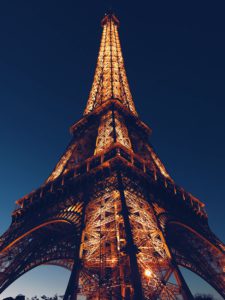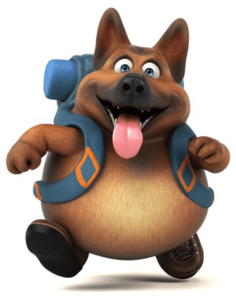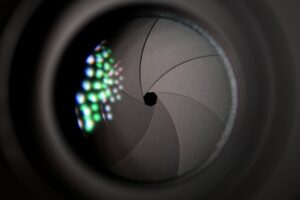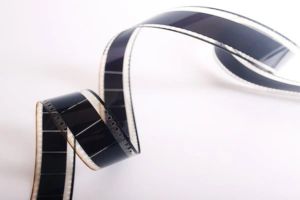Onomatopoeia is a literary technique that uses a word to portray a sound. Examples of onomatopoeic terms include “pop,” “crack,” and “splat.” Utilizing onomatopoeia to describe the noises that people or animals create is also possible. Animal noises like the oink, meow (or miaow), roar, and chirp are frequently used as onomatopoeias. Language-specific onomatopoeia varies but generally adheres to the larger linguistic framework. As a result, the sound of a clock can be described in various ways, including tick-tock in English, tic tac in Spanish and Italian, d in Mandarin, kachi kachi in Japanese, and tik-tik in Hindi. Explore the fascinating world of onomatopoeia.

What Are Onomatopoeic Words?
Gurgle, clap, zap, and pitter-patter are a few onomatopoeias. The sounds of spring, the clap of erasers on a blackboard, and the pitter-patter of raindrops falling on the sidewalk like small footprints are all sounds that can nearly be heard when these words are used in context. Using onomatopoeic words can improve the imagery in your story or poetry. Onomatopoeia isn’t technically an instance of auditory imagery because auditory imagery refers to the use of metaphorical language to describe sound. However, an onomatopoeia can support auditory imagery because both tools enhance the work’s sound features. Not all onomatopoeic words are included in dictionaries, it should be noted. Many writers have created their sounds to go along with their writing.
Onomatopoeic Effect Without Onomatopoeic Words
Onomatopoeia is a fascinating literary device that, rather uniquely, allows words to replicate the actual sounds they represent. This clever technique adds depth and sensory richness to language, helping readers immerse themselves more deeply in a text.
Example: Consider a gentle rain shower that soothes the earth. The patter of raindrops on the roof, the “pitter-patter,” brings that delicate sound to life, allowing readers to feel the calming effect of the rain more profoundly.

What Are the Types of Onomatopoeia?
The Four Types of Onomatopoeia
Onomatopoeia has a few distinct variants:
- Real words that imitate real things
- Real words that evoke the sound of actual objects.
- Faked words that sound real
- A string of characters that resembles the sound “raw.”
Real words that imitate real things
This form of onomatopoeia is called conventional onomatopoeia since it employs words whose sounds resemble those of actual things. The word “meow,” which sounds like a cat meowing, is a traditional example of onomatopoeia. This kind of onomatopoeia is by far the most prevalent.

Real words that evoke the sound of actual things
Here, even if the words used don’t duplicate the sound, in this less common sort of onomatopoeia, a word or group of words are used to resemble the sound of something in the actual world. The well-known poem “The Bells” by Edgar Allan Poe is probably the most apt example of this form of onomatopoeia. Poe uses the word “bell” 62 times in this poem to mimic the sound of a bell tolling and ringing, even though the word itself does not sound like a bell ringing.
Faked words that sound real
Made-up words can fill the space when no word prevails sufficiently to capture a real-world sound’s nuances. For example, when the famous James Joyce wanted a word to convey the sound of a knock on a door, he invented “tattarrattat.” Today, almost a hundred years after he coined it in his novel Ulysses, “tattarrattat” has become a legit word. It’s in the Oxford English Dictionary.
A string of characters that resemble the sound “raw.”
Sometimes onomatopoeia is expressed entirely without the use of words, as in the cases of “Zzzzzz” for snoring or sleeping, “hachoo” for sneezing, or “tsk-tsk” or “tut-tut” for the reprimanding sound we make when we are upset.
How To Identify Onomatopoeia?
There is no standard to determine whether a word is onomatopoeic. Some words, like “meow” and “buzz,” are obvious onomatopoeic examples because they resemble sound transcriptions written out in letters. However, other onomatopoeic terms are more subtly used, such as “throbbing” and “moaning,” which may be found in Edgar Allan Poe’s poem “The Bells.”

Some Essential Details About Onomatopoeia
- Onomatopoeia can use real words, fabricated words, or letters to represent raw sounds (as “Zzzzzz” represents someone sleeping or snoring).
- Platforms like advertising, branding, and slogans also use words like -“Snap, pop, tap-tap.”
- Onomatopoeia can vary between cultures and languages, even when referring to the same sound. The Italian equivalent of a dog’s “bau” is its “woof in English.

Onomatopoeia Examples
Onomatopoeia is one of the best techniques a poet can use to add sounds to a poem. When we read an onomatopoeia, we practically hear the noises it produces because of how the word looks. Onomatopoeic words in literature create an auditory experience that enriches the storytelling, adding a layer of realism and emotion that resonates with the readers and audiences. Examples of onomatopoeia include slam, splash, bam, babble, warble, gurgle, mumble, and burp.
In Movies
Star Wars

Lightsaber Battles: The unmistakable “hum” and “vroom” of a lightsaber as it’s swung and the “clash” when lightsabers meet.
Star Wars A New Hope 1977 Trailer
[Jwatchnow link=”https://www.youtube.com/watch?v=zv0u8ztv8DA” watchon=”YouTube Movies”]
Jurassic Park

The “thud” and “thump” of the approaching T-Rex, as sensed through ripples in a water cup.
Jurassic Park (1993) – Welcome to Jurassic Park Scene | Movieclips
[Jwatchnow link=”https://www.amazon.com/Jurassic-Park-Sam-Neill/dp/B009CGKW10/ref=sr_1_2?crid=1RWLYGGO4EYT4&keywords=jurassic+park&qid=1697451476&sprefix=jurrassic+park%2Caps%2C437&sr=8-2″ watchon=”Amazon”]
Indiana Jones: Raiders of the Lost Ark

The “whip” sound as Indy uses his iconic whip and the “clang” of the golden idol landing.
Indiana Jones and the Raiders of the Lost Ark | HE Trailer | Paramount Pictures UK
[Jwatchnow link=”https://www.amazon.com/Jurassic-Park-Sam-Neill/dp/B009CGKW10/ref=sr_1_2?crid=1RWLYGGO4EYT4&keywords=jurassic+park&qid=1697451476&sprefix=jurrassic+park%2Caps%2C437&sr=8-2″ watchon=”Amazon”]
The Dark Knight

The “whizz” of the Batarang and other gadgets and the “boom” of explosions set by the Joker.
[Jwatchnow link=”https://www.amazon.com/Dark-Knight-Christian-Bale/dp/B0091WAN3C/ref=sr_1_2?crid=5L6VS0LTHIFX&keywords=The+Dark+Knight&qid=1697451617&sprefix=the+dark+knight%2Caps%2C770&sr=8-2″ watchon=”Amazon”]
Kill Bill

The “swish” and “clang” of the samurai swords during the epic showdown between The Bride and the Crazy 88s.
Kill Bill: Vol. 1 (2003) Official Trailer – Uma Thurman, Lucy Liu Action Movie HD
[Jwatchnow link=”https://www.amazon.com/Kill-Bill-1-Uma-Thurman/dp/B008Y7G1BI/ref=sr_1_1?crid=B10D9K9TR43N&keywords=Kill+Bill&qid=1697452524&sprefix=kill+bill%2Caps%2C805&sr=8-1″ watchon=”Amazon”]
Jaws

The subtle “splash” and “swish” of water indicate the shark’s approach before the dramatic “duh-dum” theme kicks in.
JAW Imax release trailer, NL/FR
[Jwatchnow link=”https://www.amazon.com/Jaws-Roy-Scheider/dp/B009CG9CXO/ref=sr_1_3?crid=13OMD0265QPXW&keywords=Jaws&qid=1697452560&sprefix=jaws%2Caps%2C714&sr=8-3″ watchon=”Amazon”]
Transformers

When the robots transform, the “clink, ” “clank” and other mechanical noises occur.
Transformers: Rise of the Beasts | Official Trailer (2023 Movie)
[Jwatchnow link=”https://www.amazon.com/Transformers-Rise-Beasts-Anthony-Ramos/dp/B0BX261KGS/ref=sr_1_1?crid=U0BAUA1DK9GH&keywords=transformers+movie&qid=1697452681&sprefix=tranformers+movi%2Caps%2C716&sr=8-1″ watchon=”Amazon”]
Home Alone

The various booby traps set up by Kevin, like the “snap” of the toy cars and ornaments on the floor, the “thud” of the paint cans swinging into Marv and Harry, and the “sizzle” of the doorknob.
Home Alone (1990) Trailer #1 | Movieclips Classic Trailers
[Jwatchnow link=”https://www.amazon.com/Home-Alone-Macaulay-Culkin/dp/B00AGE6856/ref=sr_1_1?crid=1JYNUVD319YTN&keywords=Home+Alone&qid=1697452703&sprefix=home+alone%2Caps%2C695&sr=8-1″ watchon=”Amazon”]
Toy Story

The “buzz” of Buzz Lightyear’s wings and the “click” of his helmet visor.
Toy Story 4 | Official Trailer
[Jwatchnow link=”https://www.amazon.com/Toy-Story-Tim-Allen/dp/B005ZMV2EQ/ref=sr_1_2?crid=2OL1W96S9KWZR&keywords=toy+story&qid=1697452800&sprefix=toy+story%2Caps%2C399&sr=8-2″ watchon=”Amazon”]
Pulp Fiction

The exaggerated “pop” when Vincent Vega administers the adrenaline shot to Mia Wallace.
Pulp Fiction Official Trailer #1 – (1994) HD
[Jwatchnow link=”https://www.amazon.com/Pulp-Fiction-John-Travolta/dp/B008Y6W4I8/ref=sr_1_1?crid=31SX0JUPFGBBR&keywords=Pulp+Fiction&qid=1697452847&sprefix=pulp+fiction%2Caps%2C741&sr=8-1″ watchon=”Amazon”]
Finding Nemo

The “bloop” and “splash” sound in the aquatic environment, especially during the escape from the dentist’s office.
[Jwatchnow link=”https://www.amazon.com/Finding-Nemo-Albert-Brooks/dp/B00AHSF4AQ/ref=sr_1_2?crid=3VM29M6E9UCZ8&keywords=Finding+Nemo&qid=1697453091&sprefix=finding+nemo%2Caps%2C837&sr=8-2″ watchon=”Amazon”]
The Matrix

The “whizz” of bullets during the bullet-dodging scene and the “boom” of the many explosions.
The Matrix Resurrections – Official Trailer 1
[Jwatchnow link=”https://www.amazon.com/Matrix-Keanu-Reeves/dp/B0094K35S6/ref=sr_1_2?crid=1YM5KZI9WXCAA&keywords=The+Matrix&qid=1697453264&sprefix=the+matrix%2Caps%2C804&sr=8-2″ watchon=”Amazon”]
The Lion King

The “roar” of adult Simba, asserting his place as the rightful king.
Disney’s The Lion King 3D | Trailer A (OFFICIAL)
[Jwatchnow link=”https://www.amazon.com/Lion-King-Donald-Glover/dp/B07V8FBXX9/ref=sr_1_1?crid=2YCE7C75WSF25&keywords=The+Lion+King&qid=1697453407&sprefix=the+lion+king%2Caps%2C882&sr=8-1″ watchon=”Amazon”]
Batman

“Wham! Bam! Pow!”
The 1960s “Batman” TV series and the 1966 “Batman: The Movie” used onomatopoeic words like “POW!” and “BAM!” to visually and audibly emphasize the action during fight scenes.
[Jwatchnow link=”https://www.youtube.com/watch?v=ZO1pd5oAmiw” watchon=”YouTube Movies”]
Independence Day

“Boom!”
In the film, the iconic line “Welcome to Earth!” is delivered by Will Smith’s character just before he punches an alien, accompanied by the sound effect “BOOM!”
Independence Day | Official Trailer #1 |1996
[Jwatchnow link=” https://www.youtube.com/watch?v=cBhGt0eDnNs” watchon=”YouTube Movies”]
Psycho

“Tick-Tock”
The ticking clock sound is a classic element in suspense films. For example, it is used effectively in Alfred Hitchcock’s “Psycho” (1960).
A Bug’s Life

“Bzzzzz”
In the animated film “A Bug’s Life” (1998), onomatopoeia is used extensively to mimic the sounds of insects, such as the buzzing of flies.
A Bug’s Life (1998) Trailer #1 | Movieclips Classic Trailers
[Jwatchnow link=”https://www.hotstar.com/in/paywall?content_id=1260018158&content_title=A+Bug%27s+Life&content_type=MOVIE&failed_pc_entitlement_context=%7B%22playback_list_platforms%22%3A%22web%22%2C%22tags%22%3A%22vip%2Cpaid%22%7D&failed_pc_entitlement_required=%5B%22tags%22%2C%22playback_list_platforms%22%5D&is_content_paid=true&utm_source=gwa” watchon=”Disney+ Hotstar”]
Onomatopoeic Words in Movies
Sssssss…
The suspenseful sound of a rattlesnake’s rattle is often depicted with onomatopoeia in Western movies.
Zap

In superhero movies like “Spider-Man” and “X-Men,” the onomatopoeic “ZAP” is often used to accompany the use of superpowers, such as web-shooting or energy blasts.
Spiderhead | Chris Hemsworth | Official Trailer | Netflix
[Jwatchnow link=”https://www.netflix.com/in/title/80210767?source=35″ watchon=”Netflix”]
Creak

In horror films, onomatopoeic sounds like “CREEK” enhance tension and fear, especially when a door or floorboard makes an eerie noise.
DOORS | Sound Effects | Trailer
Splash

The sound of a character or object hitting the water is often depicted with the onomatopoeia “SPLASH,” as seen in scenes from “Cast Away” (2000) and “Forrest Gump” (1994).
Cast Away (2000) Theatrical Trailer
[Jwatchnow link=”https://www.youtube.com/watch?v=xrpNv3XzTvY” watchon=”Cast Away – Youtube”]
While not always explicitly onomatopoeic in dialogue, these moments rely heavily on sound effects that could be described onomatopoeically. These sounds become iconic elements of the film scenes, enhancing their emotional impact and memorability.
In Poetry
Edgar Allan Poe’s “The Bells”
“Tintinnabulation, that so musically wells From the bells, bells, bells, bells, bells, bells, bells— From the jingling and the tinkling of the bells.”
In this poem, the word “tintinnabulation” imitates the sound of bells ringing.
William Wordsworth’s “I Wandered Lonely as a Cloud”
“And then my heart with pleasure fills, And dances with the daffodils.”
The word “dances” imitates the lively, joyful movement of the daffodils.
Alfred Lord Tennyson’s “Break, Break, Break”
“But the tender grace of a day that is dead Will never come back to me.”
The word “break” is repeated to mimic the sound of waves breaking on the shore.
In Literature
Arthur Conan Doyle’s “The Adventure of the Speckled Band” (Sherlock Holmes)
“The hissing of a kettle.”
The word “hissing” imitates the sound of steam escaping from a boiling kettle.
J.K. Rowling’s “Harry Potter and the Chamber of Secrets”
“The snake slithered through the grass.”
The word “slithered” imitates the smooth, quiet movement of a snake.
Ernest Hemingway’s “The Old Man and the Sea”:
“The fish jumped out of the water and splashed back in.”
The word “splashed” imitates the sound of the fish hitting the water after jumping.
These examples demonstrate how onomatopoeia can add sensory and auditory elements to both poetry and literature, making the writing more vivid and engaging for readers.
How to Use Onomatopoeia in a Sentence?
As discussed, using words to describe any sound created by a living being, a non-living object, or an entity is termed onomatopoeia. In some cases, the sound itself is used as the word. For example, ‘meow’ is the sound made by a cat, and the onomatopoeic word to mention the sound of cats is also meow. Onomatopoeia can be identified easily. The only thing you will have to look for is to see if the word denotes a sound.
Onomatopoeia in Screenplays
Onomatopoeia is a literary technique employed in screenplays to evoke aural and sensory experiences for the reader and, inadvertently, for the eventual viewers of the film. It gives the situations more depth and vividness, which makes it easier for the reader and, subsequently, the audience to picture the noises and activities occurring. Here are some examples of onomatopoeia in scripts.
Sound Description
Onomatopoeic words are often used to describe sounds in the scene. For example, “CRASH,” “BANG,” or “BOOM” may be used to indicate a loud noise or an explosion. This allows the reader to imagine the sound and its impact on the scene.
Action Emphasis
Onomatopoeic words can emphasize specific actions or events. For instance, “SLAM” could indicate the force with which a door is closed, “WHIR” might describe the sound of a spinning fan, or “RUSTLE” could suggest movement in the bushes.
Tone and Mood
Onomatopoeia can affect a scene’s tone and mood. A “GENTLE RUSTLING” might create a calm and peaceful atmosphere, while a “DEAFENING ROAR” could evoke tension and chaos.
Timing and Pacing
Onomatopoeic words can also help in timing and pacing. For instance, the repeated use of “TICK-TOCK” in a screenplay might symbolize a countdown, building suspense.
Creative Expression
Some screenwriters use onomatopoeia creatively to convey a sense of style or artistic flair. They may invent words or use less common onomatopoeic terms to create a unique auditory experience.
Special Effects
Onomatopoeia can guide the visual and sound effects teams in creating realistic and impactful sequences in scenes with special effects. For example, “ZAP” might indicate a laser beam guiding the visual and audio effects creation.
It’s important to use onomatopoeic words judiciously in screenplays. Overuse or excessive emphasis on sound effects can clutter the script and distract from the storytelling. However, when used strategically and effectively, onomatopoeia can enhance the reader’s experience and contribute to the film’s overall impact.
Onomatopoeia in Movies
Onomatopoeia, or words or sounds that mimic the noises connected with the activities or things they represent, is a term used to describe this technique in film. To captivate viewers and improve the viewing experience, these words are frequently employed to produce auditory and visual effects in movies. The terms “boom” for an explosion, “whack” for a blow, “sizzle” for something frying, or “splash” for a water-related scenario are some examples of onomatopoeic vocabulary in movies. Onomatopoeia offers a level of sensory reality to films, making it easier for viewers to get lost in the action and feelings shown on screen. Onomatopoeia plays a significant role in movies by adding sensory depth and enhancing the audience’s engagement with the film. Here’s how onomatopoeia is used in movies:
Sound Effects
Onomatopoeic words are often used as cues for movie sound effects. For example, the word “BOOM” on the script signals the sound effects team to create a corresponding loud explosion sound. These onomatopoeic cues help synchronize a scene’s visual and auditory elements, making it more immersive.
20 Boom Sound Effects Free | Trailer SFX Pack vol.2: Cinematic Booms | Boom Sound No Copyright
Enhanced Realism
Onomatopoeia is used to make the sounds in movies feel more realistic. For instance, the sound of a door slamming can be emphasized with the onomatopoeic word “SLAM,” making the action more palpable to the audience.
Visual Impact
On-screen text or subtitles with onomatopoeic words are sometimes used to enhance the visual impact of a scene. This can add a graphic or artistic element to the storytelling.
Comedic Effect
Onomatopoeia is often used for comedic effect in movies. For example, exaggerated onomatopoeic sounds can accompany physical comedy scenes, making them funnier.
Onomatopoeia Examples in Songs, Movies, and TV
Auditory Emphasis
Onomatopoeia can draw the audience’s attention to specific sounds or actions crucial to the plot. For example, a ticking clock with the onomatopoeic “TICK-TOCK” can build tension in a suspenseful scene.
Cinematic Style
Filmmakers may use onomatopoeia to establish a particular cinematic style or theme. For example, a film with a comic book aesthetic might use stylized onomatopoeic words during action sequences.
Emotional Impact
Onomatopoeia can enhance the emotional impact of a scene. The sound of a heartbeat with the onomatopoeic “THUMP-THUMP” can intensify a dramatic moment.
Subtlety and Symbolism
Onomatopoeia can be used subtly to symbolize a theme or motif in a movie. For example, the recurring sound of a clock ticking in a film about time can symbolize the passage of time itself.
In summary, onomatopoeia in movies is a powerful tool for conveying and enhancing the audience’s sensory experience. It aids in creating a more immersive and engaging cinematic world by aligning visual and auditory elements and adding layers of meaning and impact to the storytelling.
Videos
What is onomatopoeia? 🤔 | Onomatopoeia in English | Learn with examples
What is Onomatopoeia? ► Words that sound like their meanings! | Learn English What is ONOMATOPOEIA? | Learn with Examples
Figures of Speech Part 1: Simile, Metaphor, Personification, Apostrophe, Onomatopoeia – English
Onomatopoeia in movies, TV, and songs
Onomatopoeia in Pop Culture – movies, TV, and songs
ONOMATOPOEIA EXAMPLES IN POPULAR SONGS / by Raffy-Teacher















